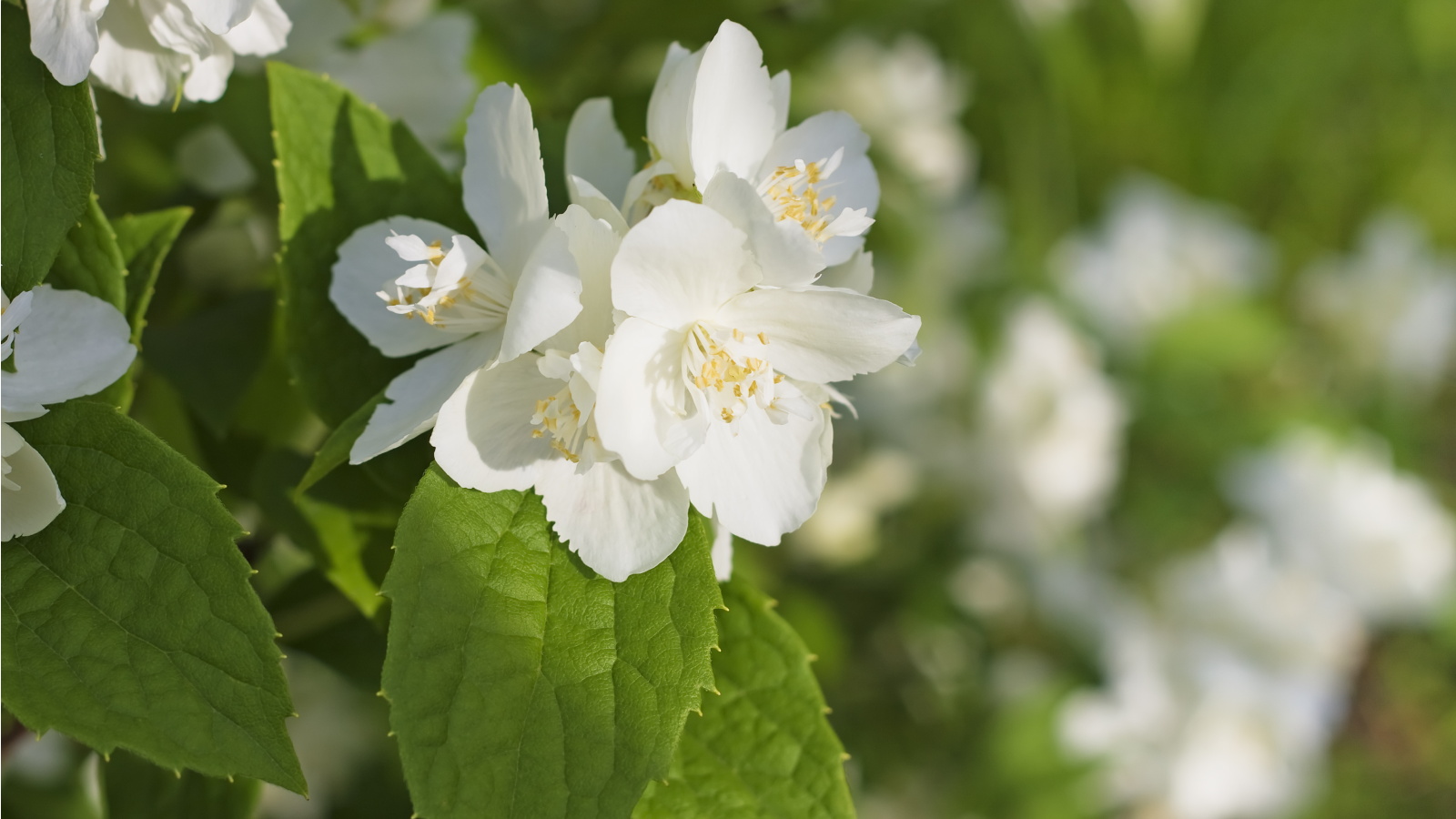
Catch a waft of orange-blossom fragrance from these mock orange varieties and it will stop you in your tracks. One of the most dependable plants in the garden, mock orange (also known as philadelphus) is one of the toughest, most cold hardy and resilient deciduous shrubs around, and combines intoxicating fragrance with an effervescent profusion of white flowers.
There are dwarf varieties for the front of the flower bed garden, and taller varieties for the back of the border. Some of those with arching growth are especially pretty and we now also have the first variety that almost makes a pillar rather than a bush, as well as the first with an all-summer flowering season.
It's one of the best summer flowering shrubs for its hardiness, growing in almost any soil and for its reliability in flowering. This is what makes all mock orange varieties some of our all-time favorites.
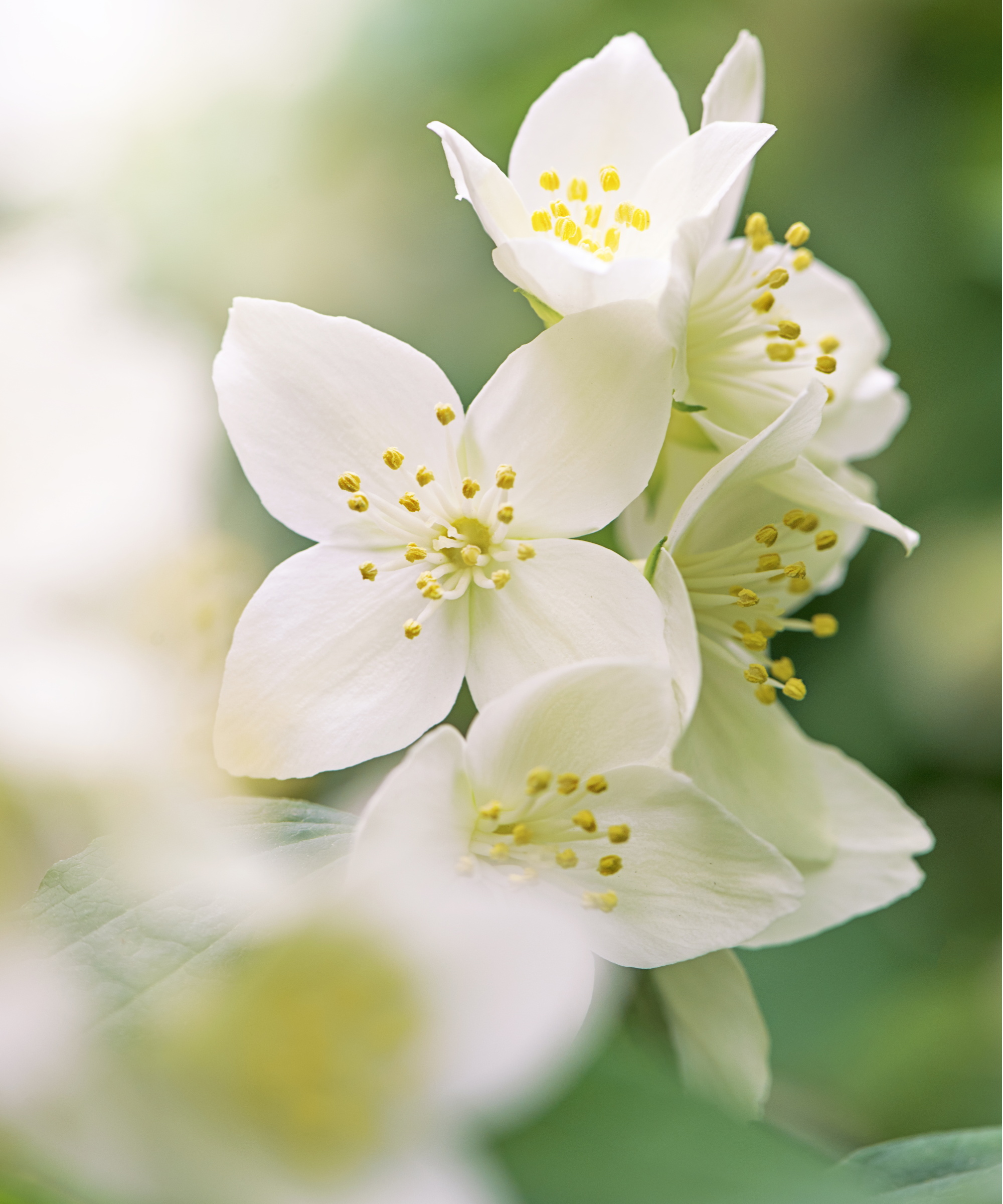
12 stunning mock orange varieties
In early summer, the flower clusters line the branches of the previous year’s shoots. Usually one-two inches across, in their simplest form with four petals of the purest white, some have a purplish mark or haze inside the base of the flower. Double flowered varieties bloom for longer.
All philadelphus varieties are happy in full sun, or in a little shade from the side, in any reasonable soil that is not parched or waterlogged.
Now find out which mock orange varieties have made it on to our shortlist and be sure to include one as part of your landscaping with shrubs - many of them are even available in Nature Hill's Mock Orange collection.
1. Philadelphus ‘Beauclerk’
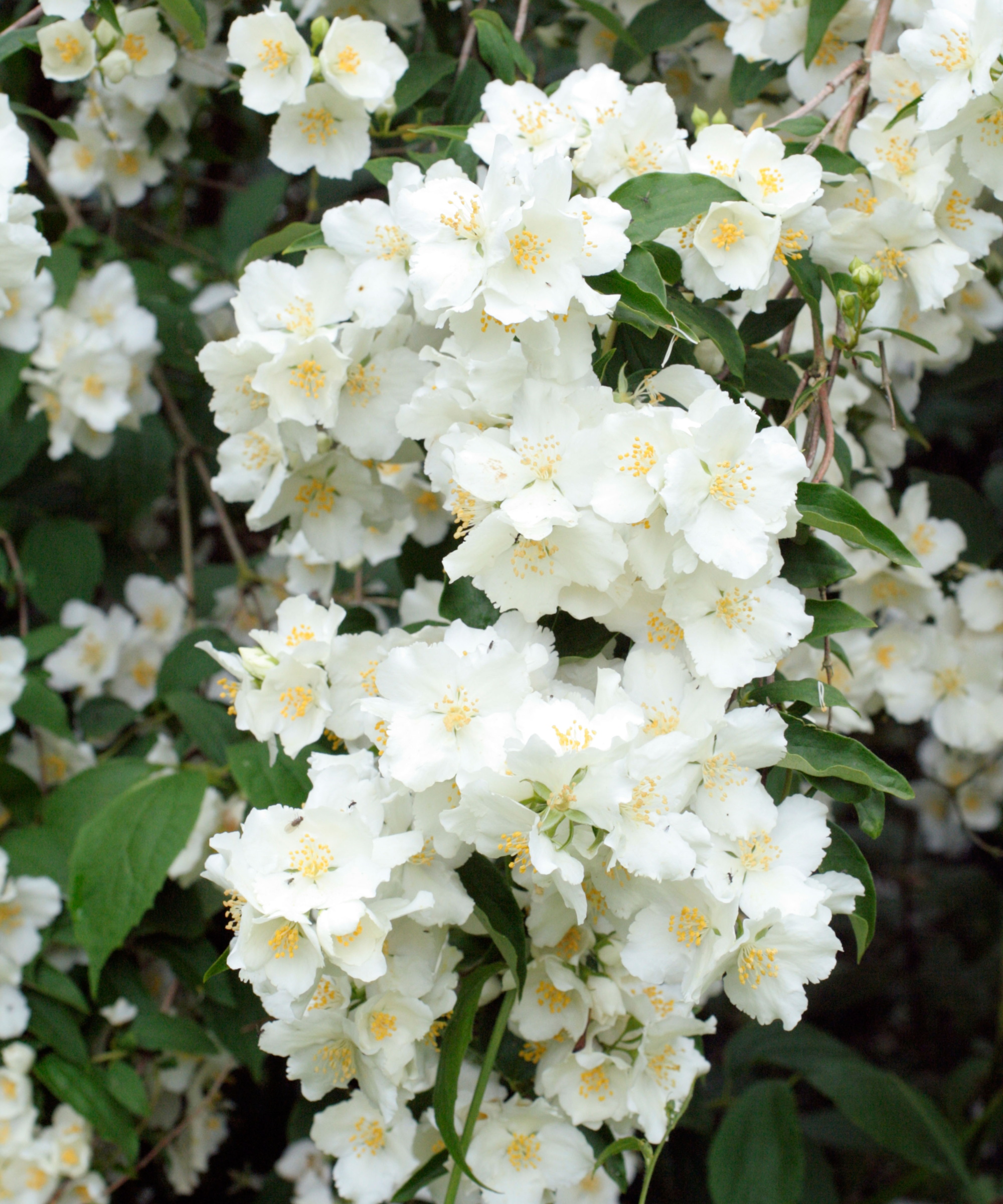
- Hardiness: US hardiness zone 5
- Height: Six feet
Large, well-scented, saucer-shaped, single white flowers, with broad overlapping petals and featuring a pink haze in the center. They open in generous clusters of between three and seven.
'It is also extremely fragrant and would be perfect for a plant to make your patio smell nice,' says Tammy Sons, horticulturist and CEO of TN Nurseries.
This philadelphus develops into an impressive feature, becoming wider than its height as it matures. It's ideal at the back of a mixed border.
Try one of the best climbing plants such as the annual canary creeper Tropaeolum peregrinum growing through it.
2. Philadelphus ‘Belle Étoile’
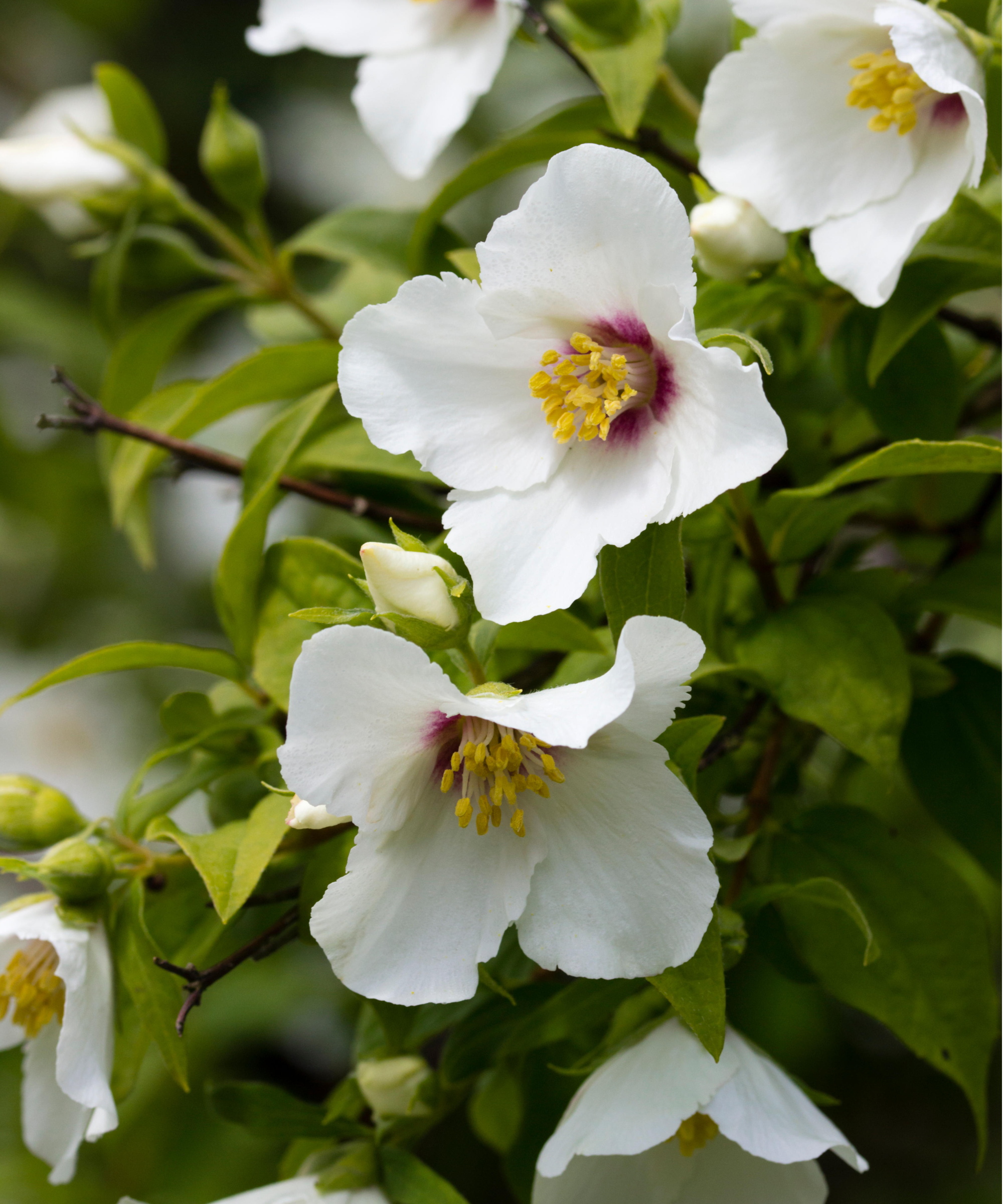
- Hardiness: US hardiness zone 5
- Height: Five feet
This variety has clusters of up to nine, exceptionally well-scented, 2-inch, single white, rather starry flowers that feature a pretty maroon mark in the center and open into a generous saucer shape.
‘Belle Étoile’ is a real favorite and develops into a fragrant feature, becoming wider than its height as it matures. It's ideal at the back of a mixed border and is great as part of your low-maintenance flower bed.
A twining annual climber such as convolvulus will use its support to provide late summer color.
3. Philadelphus ‘Erectus’
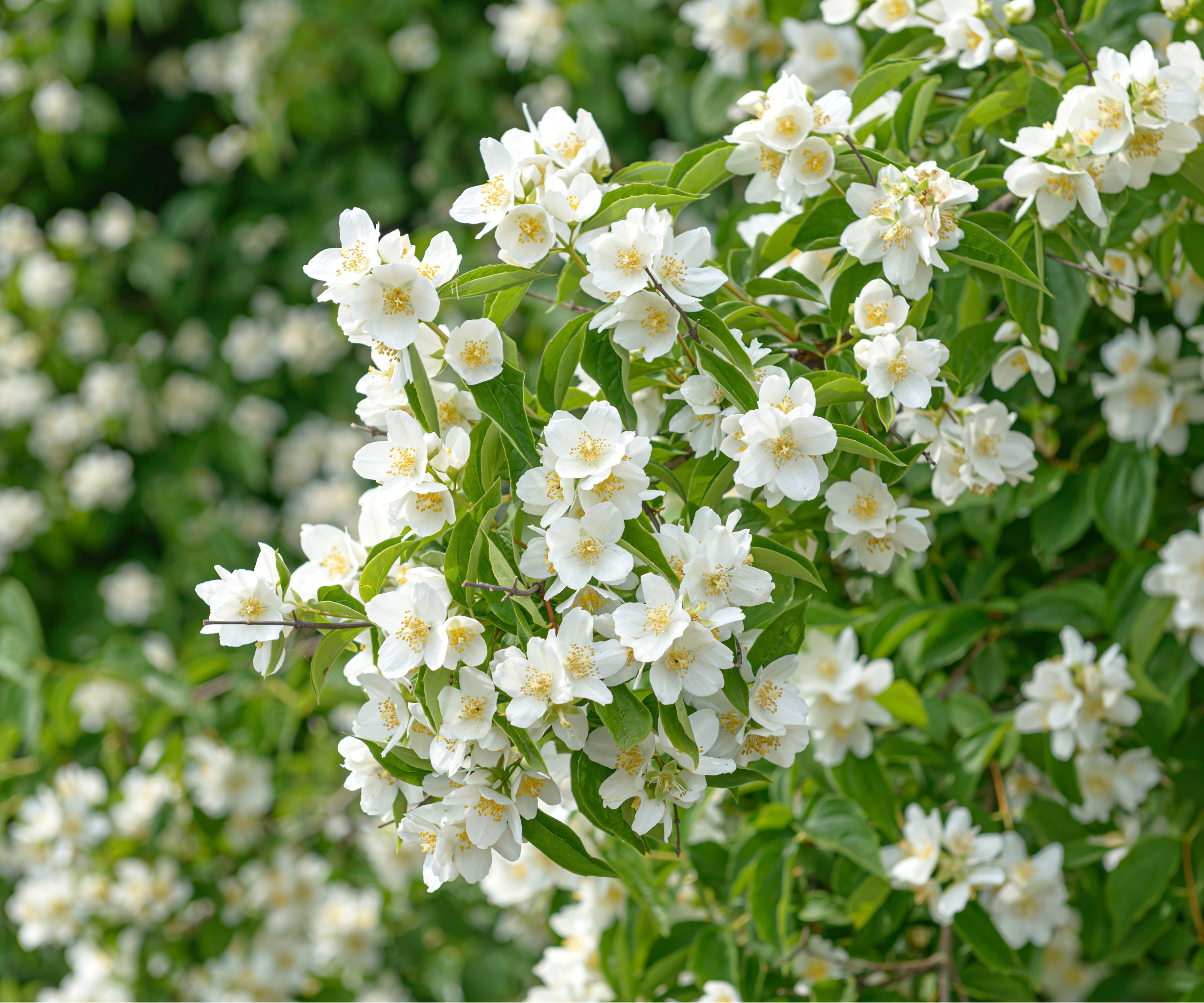
- Hardiness: US hardiness zone 5
- Height: Four feet
A shorter variety, 'Erectus' has a generally upright growth. The relatively small, one-inch, single flowers are a little creamy in their prolific clusters of up to five super-scented blooms.
The profuse flowering and exceptional fragrance more than make up for the small-flower size. Develops more arching growth if heavily pruned.
Partner with hardy geraniums in blue or pink, which will nestle happily around the base of this variety.
4. Philadelphus ‘Manteau d'Hermine’
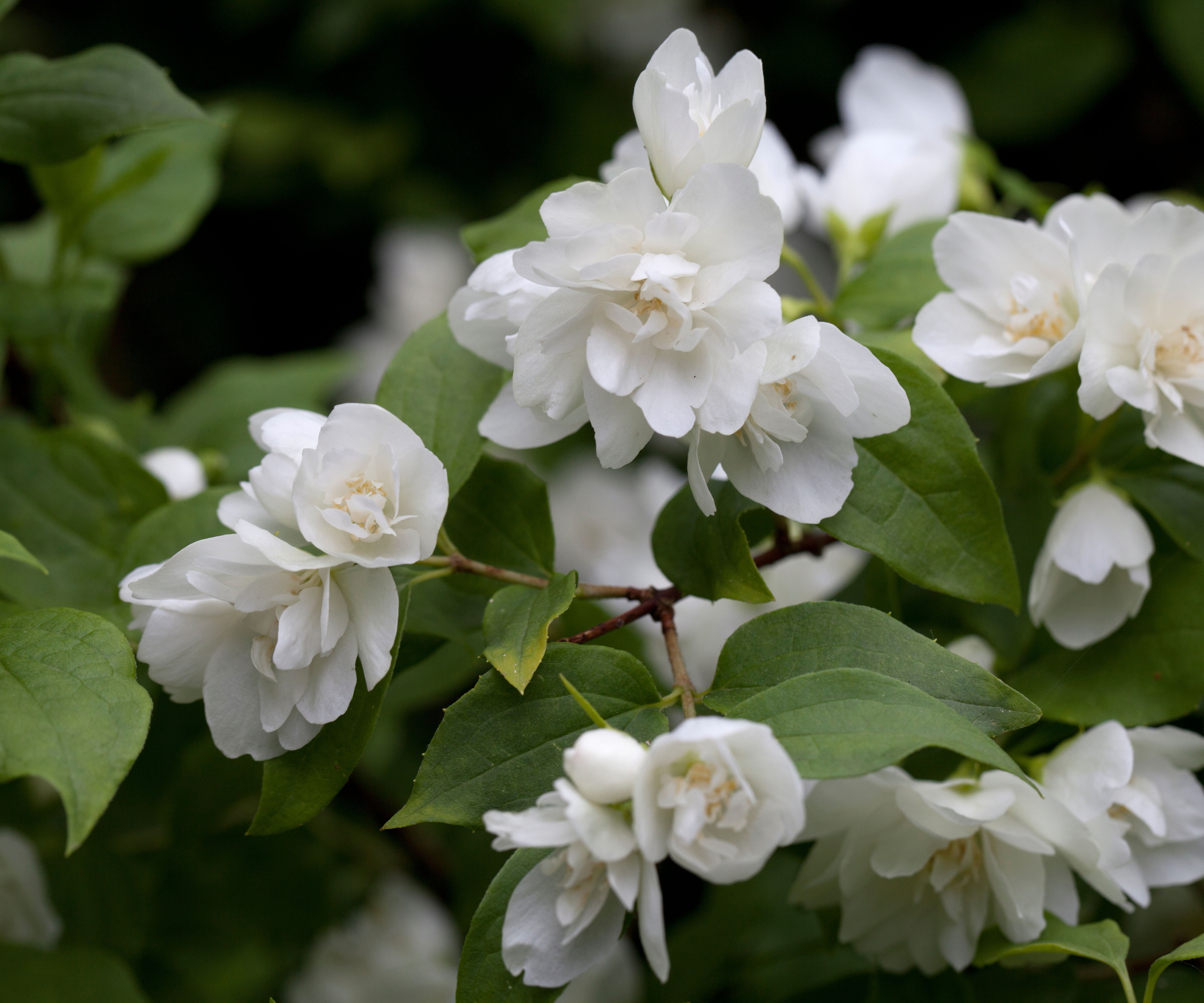
- Hardiness: US hardiness zone 5
- Height: Three feet
A delightful, neatly compact, double flowered variety with fragrant white flowers gathered in bunches of up to five for an unusually long season.
With its neat growth, and long and fragrant flowering, ‘Manteau d'Hermine’ is one of the best plants for small gardens.
Combine it with the bold glossy foliage of bergenias to create an attractive contrast.
5. Philadelphus ‘Minnesota Snowflake’
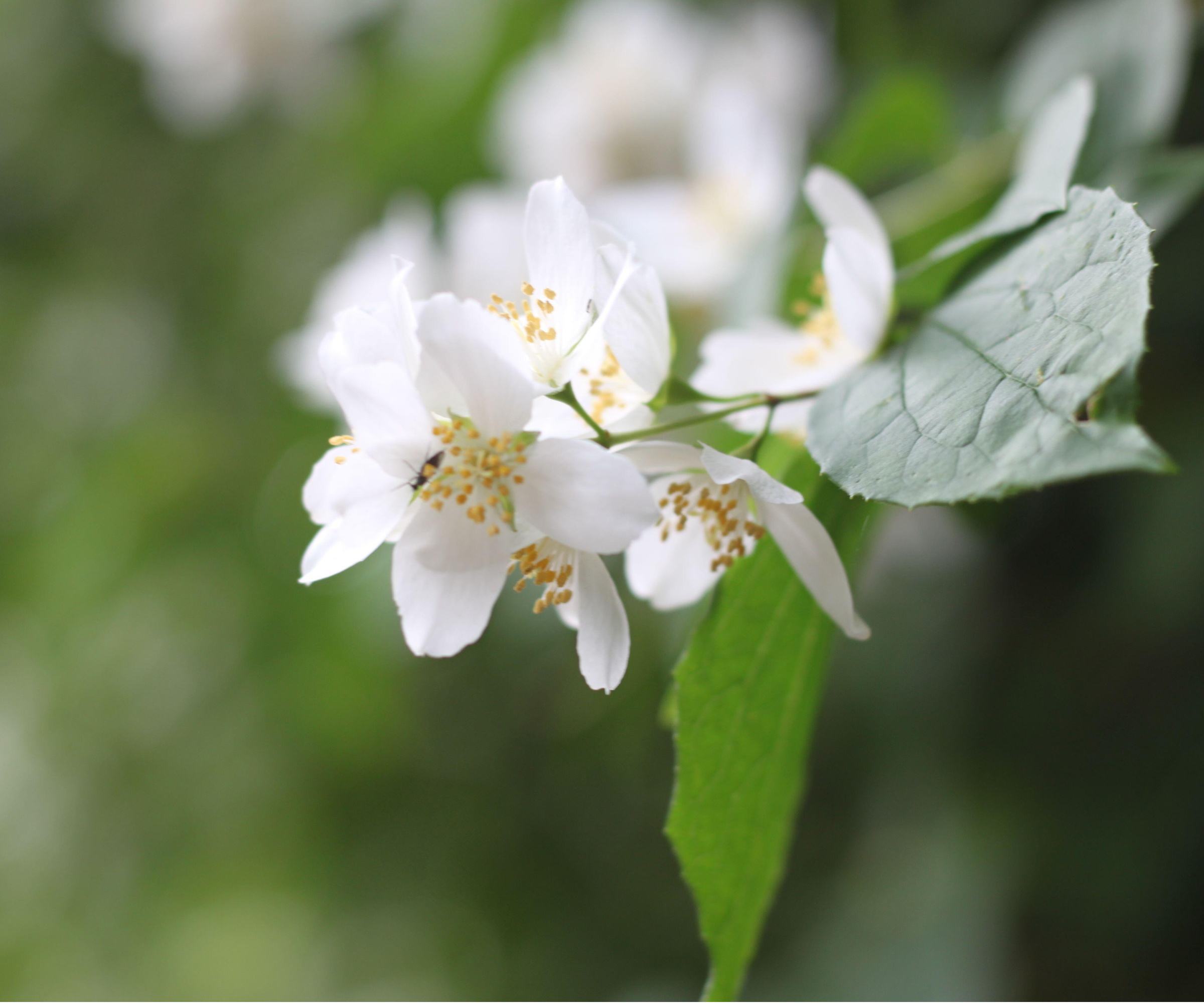
- Hardiness: US hardiness zone 4
- Height: Five feet
A compact variety, the flowering branches are weighed down by the mass of fully double fragrant flowers, with rather starry inner petals, that cover the plant.
Exceptionally winter hardy, 'Minnesota Snowflake' is ideal for colder regions, and a stunning specimen in full bloom.
Silvery leaved deadnettles (Lamium) will fill in around fill the base of the plant prettily if you're looking for options to partner it with.
With a similar appearance, you can also purchase Miniature Snowflake Mock Orange at Nature Hills.
6. Philadelphus 'Silver Showers' (‘Silberregen’)
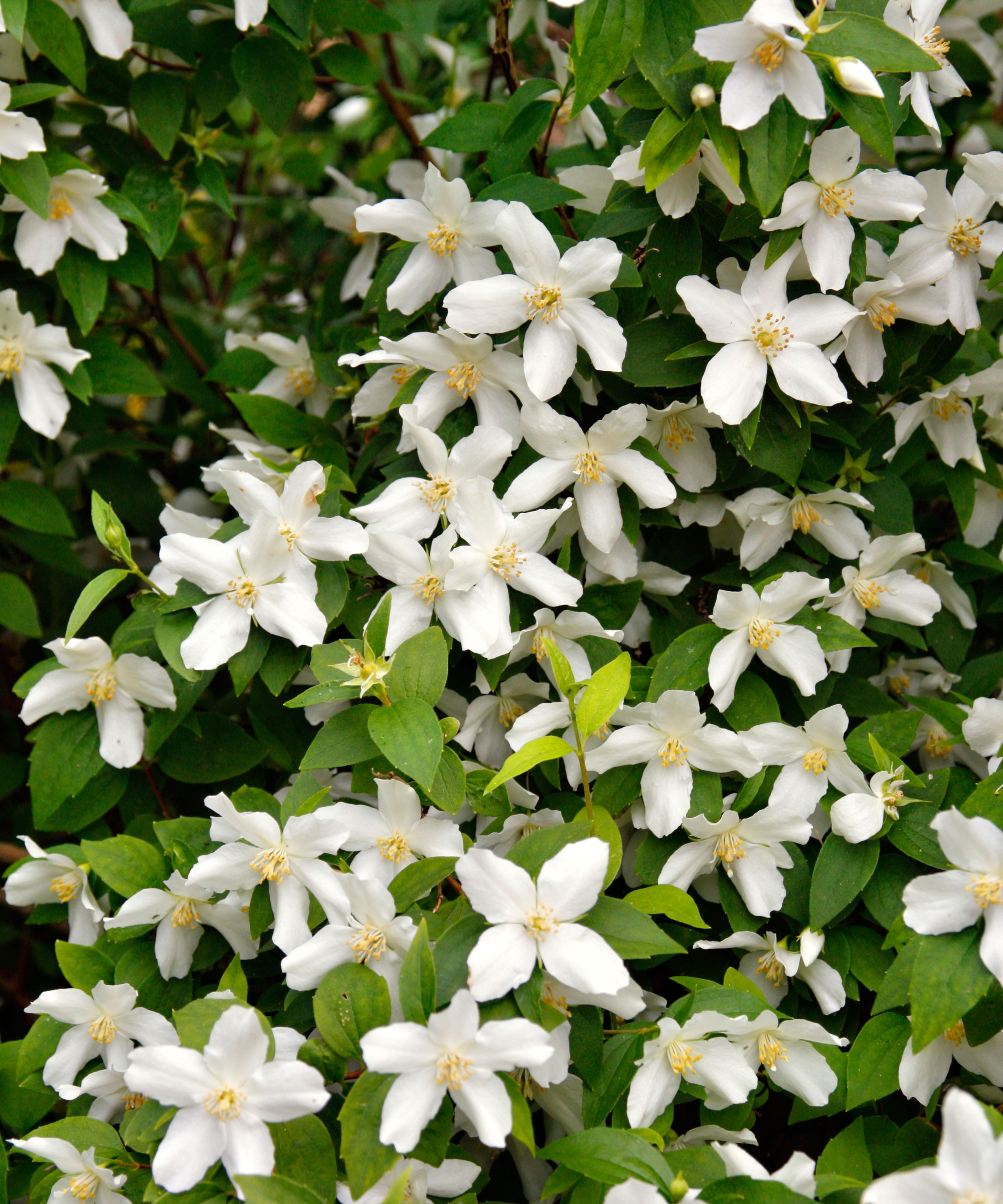
- Hardiness: US hardiness zone 4
- Height: Four feet
Neat in growth, this densely branched variety has unusually small dark leaves that never obscure its single flowers, which are scented with strawberries.
'This variety is known most for its cascading blooms that appear snowy white. It creates a nearly ethereal visage, and the sweet scent adds to the effect,' says Tammy Sons.
'Silver Showers' makes relaxed, fountain-like growth in the garden, and has a slightly more informal look than many of the shorter varieties.
The large, bright green leaves of Pulmonaria rubra make an attractive contrast as a planting partner in your low-maintenance garden border.
7. Philadelphus ‘Sybille’
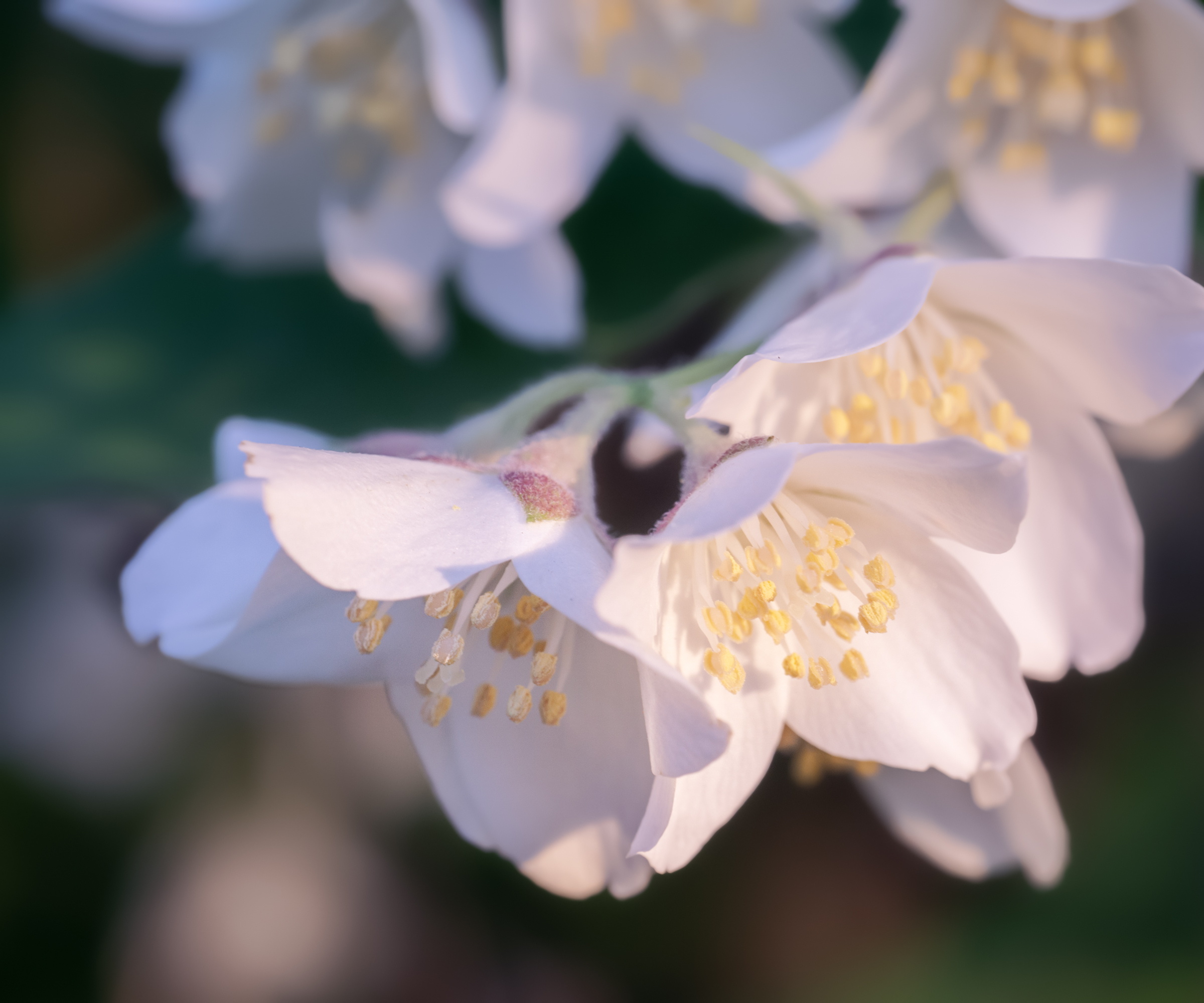
- Hardiness: US hardiness zone 5
- Height: Four feet
An especially elegant, wider-than-high variety, the foliage of philadelphus 'Sybille' turns sea-green as the season develops. The very prolific, orange-scented flowers are stained purple within, sometimes coloring half the flower.
Individual flowers last longer than those of many mock orange varieties, and this is an ideal choice if you need a medium-sized plant for a prominent place.
Variegated forms of blue-flowered periwinkle, Vinca minor, will fill in prettily at the base of your philadelphus 'Sybille'.
8. Philadelphus ‘Virginal’
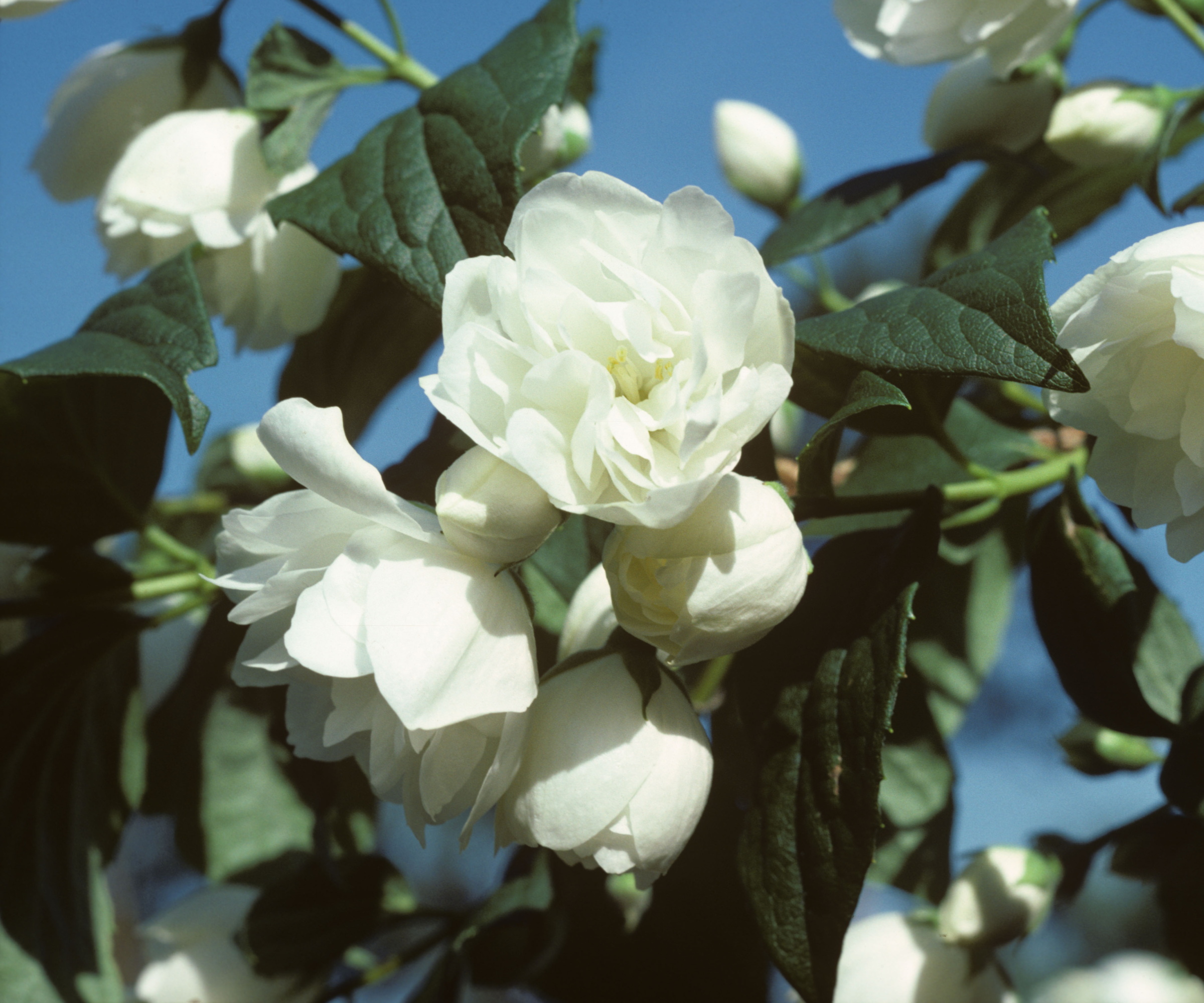
- Hardiness: US hardiness zone 4
- Height: Eight feet
Philadelphus 'Virginal' makes a large and multi-stemmed plant, and one of the most popular for many decades, with its two-inch, fully or partly double, super-scented flowers lining the branches.
It makes a fine specimen in a garden where there is space to allow it to develop to its full maturity.
Small-flowered summer clematis, such as the dainty blue ‘Betty Corning’, make the perfect planting partners as they can use it for support.
9. Philadelphus ‘Starbright’
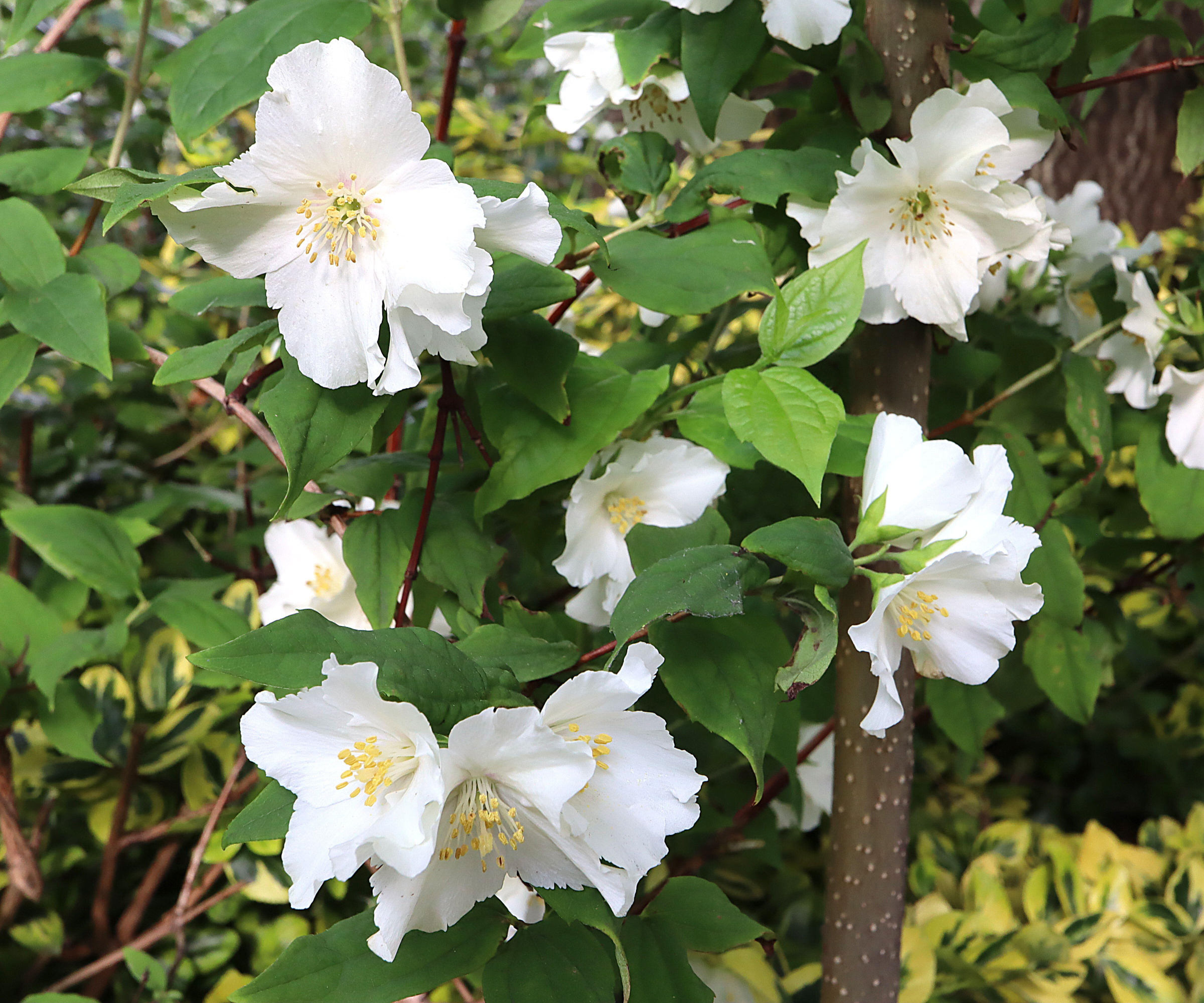
- Hardiness: US hardiness zone 3
- Height: Six feet
Striking for the dark, purplish black buds that create a starry contrast with the large, white, two-inch, four-petalled fragrant flowers. The new spring shoots are also unusual in opening with a pretty bronzed purple tint.
One of the hardiest of all mock orange varieties, this is the type to start with if you live in one of the coldest zones.
Dark-leaved heuchera (coral bells) such as ‘Palace Purple’ are a good choice of planting partner as they pick up the dark tones of 'Starbright'.
10. Philadelphus ‘Aureus’
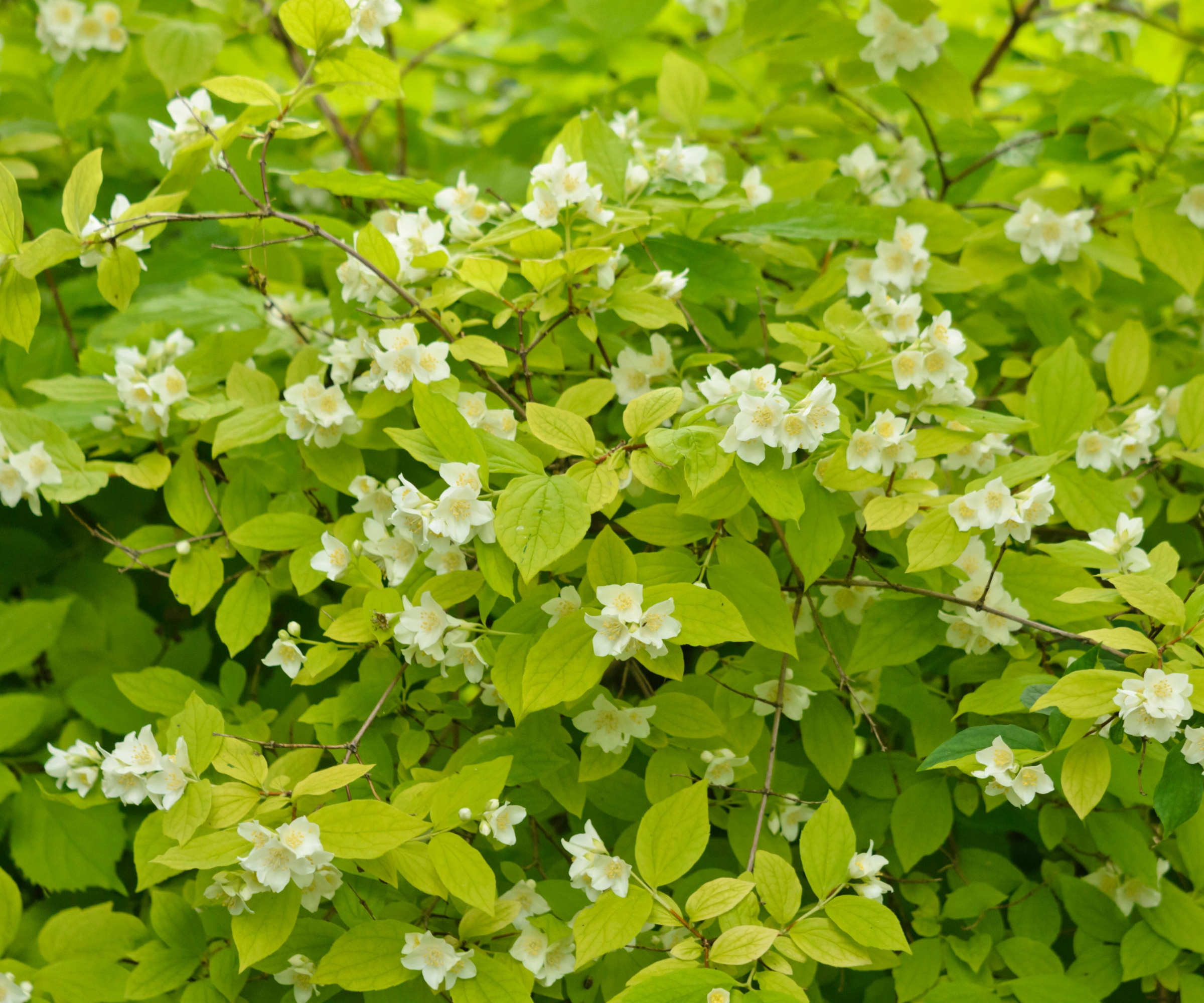
- Hardiness: US hardiness zone 5
- Height: Five feet
Clusters of up to nine small, but heavily scented, slightly creamy white flowers about one inch across, are set against bright yellow leaves that fade to greenish yellow as the season runs on.
Slower growing than many, the bright foliage of ‘Aureus’ will make a fine early feature in your garden.
Golden variegated hostas such as ‘Gold Standard’ can be planted at the base of these philadelphus varieties to pick up the leaf coloring.
11. Philadelphus ‘Variegatus’

- Hardiness: US hardiness zone 5
- Height: Four feet
A medium-sized, twiggy plant, philadelphus ‘Variegatus’ has clusters of eight or nine small, but heavily scented, white flowers about one inch across. The pale green leaves are edged in creamy white.
Relatively slow growing, shelter these philadelphus varieties from midday sun to help prevent leaf scorch.
This pretty three-season foliage shrub looks good in front of a taller darker shrub, such as a nine bark (physocarpus).
12. Philadelphus ‘Innocence’
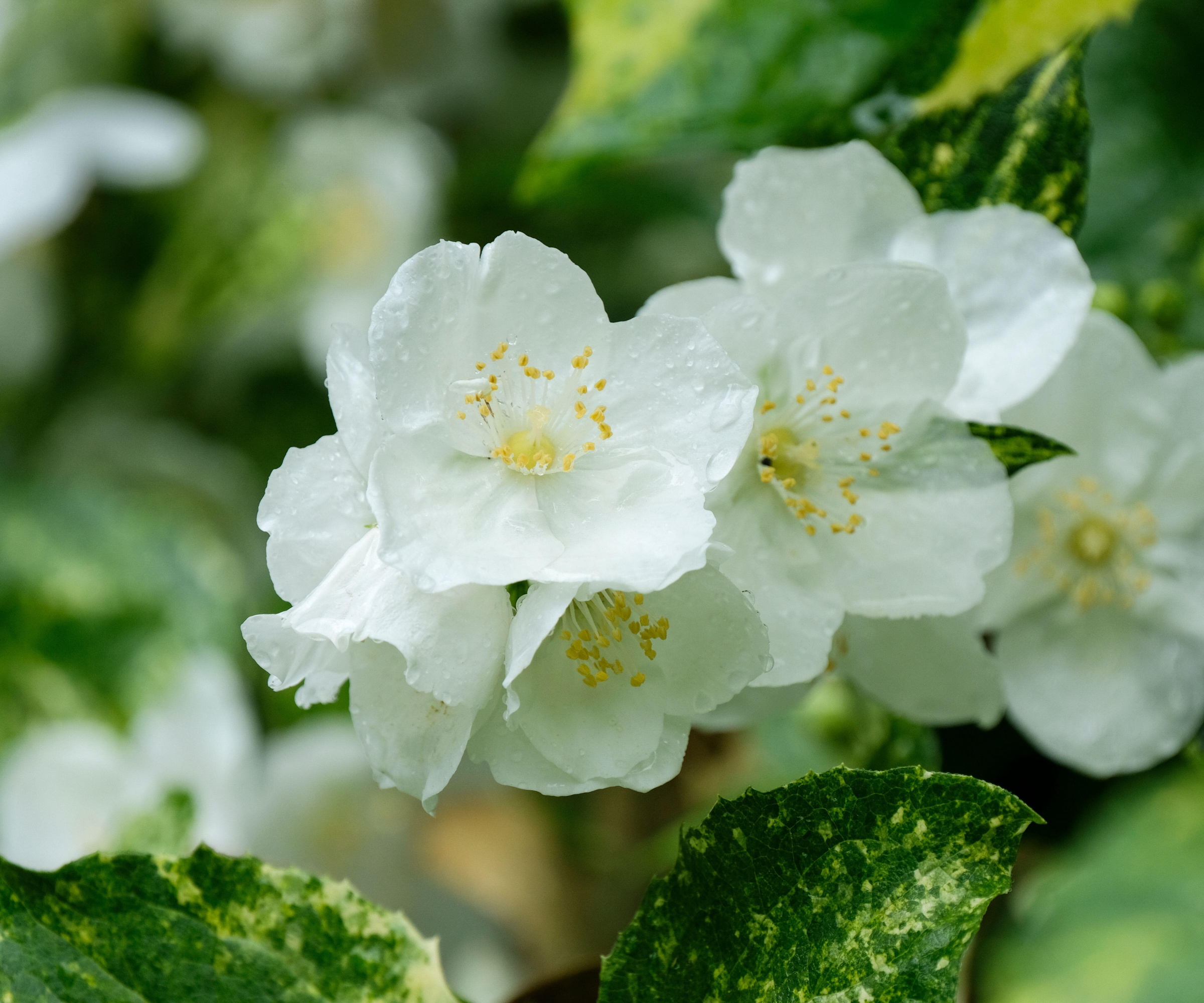
- Hardiness: US hardiness zone 4
- Height: Four feet
Lightly golden-speckled foliage is the attractive backdrop for the small scented flowers which form an impressive profusion along the branches.
Unlike other variegated varieties, ‘Innocence’ prefers full sun to encourage spectacular flowering.
Yellow-leaved heuchera, such as ‘Citronelle’, will pick up the yellow flecks in the foliage to make a charming combination.
FAQs
Can you plant mock oranges when they are in full bloom?
Yes, you can plant your new mock orange when it's in full bloom. Plant it in the usual way. As they are long-lived shrubs be sure to prepare thoroughly by amending the soil with homemade compost or soil improver.
The crucial factor is moisture. The day before planting, soak your new plant while it is still in its pot and fertilize it with a liquid feed. After planting, irrigate again and ensure that the plant does not dry out over the coming weeks.
In early summer, your new mock orange will be both flowering and producing new growth to flower next year. So it's vital the plant does not dry out at this stage.
Why has my mock orange never flowered?
The most common reason your mock orange has never flowered is pruning at the wrong time. A mock orange opens its blooms along the branches that have developed the previous year so if you prune in spring you will be cutting off the growth that produces the flowers.
Wait until the flowers have faded and dropped off, then snip off all the shoots that have carried flowers. Cut just above the fresh new shoots that are developing lower down in the plant.
The plants require little attention, although annual pruning helps promote prolific flowering. Traditionally the approach is to prune immediately after flowering, cutting back the shoots that have flowered to just above a new shoot lower down in the plant. An old branch can also be removed at the base each season. You can find out more about how to do this with our guide on how to cut back shrubs.
When a plant is growing strongly, an alternative is to promptly cut the whole plant back almost to the ground when flowering is over. In rich conditions and when the soil is moist, vigorous growth will result in an astonishing display the following year.
Will mock orange grow in shade?
It depends on the shade. Philadelphus varieties will not grow well under trees as they need more sun to prevent spindly growth and encourage blooms. But they will do well if shaded from the side, by a wall or fence, as long as they're open to the skies above. It's not one of the best shade plants but you can make it work by growing it against walls or fences.
Whichever mock orange variety you choose for your yard, these fragrant beauties are perfect for planting a scented border or simply designing a fragrant garden. It is also possible to propagate your mock orange shrub through cuttings to grow more in your yard or share with neighbors.







